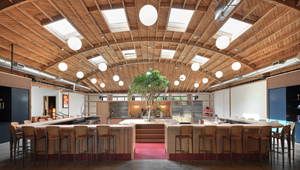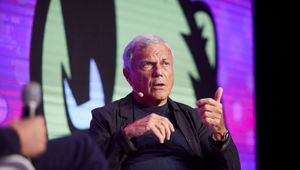
McDonald’s Hit ‘Raise Your Arches’ Ad Gets a Middle East Makeover

When McDonald’s launched its ‘Accelerating the Arches 2.0’ strategy in January, there was a lot of talk about a focus on marketing and creative excellence. The business said it wanted to ‘maximise our marketing’ - and we haven’t had to wait long to see what that looks like.
At the beginning of the year, Leo Burnett London created a campaign with hit indie director Edgar Wright that has quickly embedded itself in culture. The insight was startlingly simple - the McDonald’s arches look a bit like eyebrows. Where the campaign was deviously clever was that it took a facial expression already commonly used, conspiratorially and non-verbally, to suggest a cheeky treat.
It’s such a strong idea that it’s already been embraced outside of the UK. Studio M, part of Publicis Groupe Middle East, has created a lovingly-crafted recreation of the campaign for the GCC region (the Gulf Cooperation Council: Saudi Arabia, Kuwait, the United Arab Emirates, Qatar, Bahrain, and Oman). Directed by Remy Cayluela and produced by Tango Productions Dubai, it’s an almost shot-for-shot remake, full of the same personality as the original - however it’s also packed with local insight.
Hessa Al Sudairy is senior creative director on the new spot and she says that she knew that the idea would work perfectly in the region. Why was she so convinced? “The core insight: the link between the eyebrows and the McDonald’s Arches along with the overall mood and positivity of the campaign,” says Hessa.
According to her colleague Mahmoud Jaber, it was also the immediate clarity of the image and its link with McDonald’s iconography, which transcends culture or geography. “It’s the power of the arches, which are iconic and recognisable anywhere in the world almost instantly - visually and also the feeling it gives you,” says Mahmoud.
The original ad reflects the diversity of the UK and could be an office in London, Manchester or Birmingham. And in this new campaign, that diversity is still present, but tweaked to reflect the makeup of an office in Doha or Dubai, a mixture of locals and international workers.
“Globalisation and diversity are inevitable today. And the region is as diverse and cosmopolitan just as the rest of the world we live in,” says Hessa. “It is high time to showcase that and embrace it in a spot that speaks to all.”
Of course it wasn’t just the cast that had to be localised. The wardrobe has been tweaked to include local dress - although in many cases they maintain a lovely connection to the original colourways in the original ad, the powder pink and blue of the two female leads and the distinctive McDonald’s red and yellow of the office manager.

As Mahmoud explains, there were some other elements that were localised, particularly when it came to the kinds of characters you’d come across in the office.“There were some key roles that were changed to be more relevant in the GCC such as the mailman being changed to IT guy, whereas the janitor was changed to a local security guy,” he says.

Hessa explains the ‘proactive local security’ who like to ‘play a bigger role in the office versus just guarding the building’ is a GCC-specific touch that will resonate with viewers.In fact, the spot is sprinkled with such character insights, making the spot feel more authentic to the audience in the GCC. Hessa has a few favourite details.
“The colleague in the office ‘Huda’ - we deliberately chose an older woman to play the role of ‘Huda’ which is a common character in offices with her charm and laid-back, relaxed attitude to life. [For] the elevator guy - we chose a specific look to this character which is humorous as this type of character is the guy who likes to take a lot of breaks and speak to people,” Hessa explains.

The spot is not only a great insight into the local office culture in the GCC, it also provides an instructive lesson into how to do adaptation and localisation well while treating it as a creative exercise in its own right.
“Embrace the beauty of the original idea while making sure the details are well crafted and relevant to the regional you are trying to localise for,” says Hessa. “The devil is in the details, versus the overall approach.”















